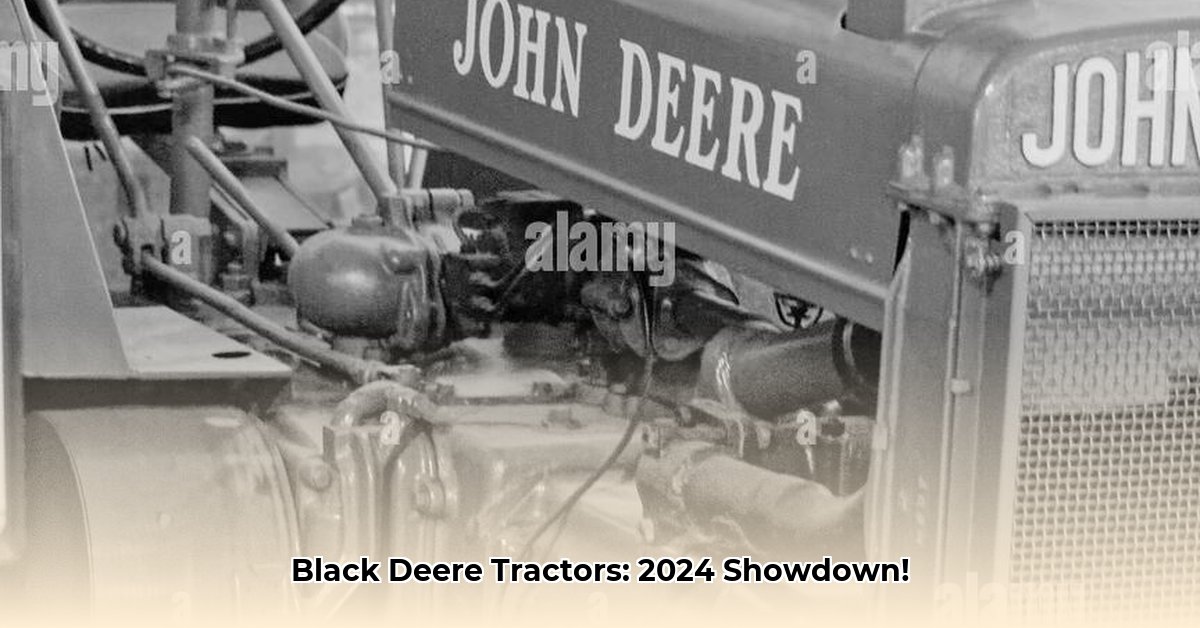
Unveiling the Mystery of John Deere's Black Tractors
Buying a tractor is a significant investment, demanding careful consideration. This review examines the relatively new "black" John Deere tractors appearing in 2024. These models, lacking official categorization by John Deere, present a challenge for potential buyers seeking detailed information. The lack of clear specifications on John Deere's website hinders direct comparison with competitors. For a helpful comparison chart, see this tractor comparison chart. This review aims to shed light on their strengths and weaknesses based on available information.
Power and Performance: A Need for Transparency
John Deere's 2024 range offers diverse options, from compact landscaping tractors to large-scale farming behemoths. However, a critical shortcoming is the absence of readily available, detailed specifications. Crucial data such as horsepower, torque, fuel efficiency, and transmission types remains elusive, hindering informed decision-making. This lack of transparency is a major concern for prospective buyers. How can a buyer accurately compare different models without key performance indicators?
Financing Incentives: A Double-Edged Sword
John Deere's attractive 0% APR financing options significantly impact affordability. Sixty months of interest-free payments can be a powerful incentive, particularly for budget-conscious buyers and new businesses. However, it's crucial to remember that tempting financing shouldn't overshadow a critical evaluation of the tractor's features and long-term value. Does the financing justify potentially higher running costs or less-than-ideal performance?
Comparing to the Competition: A Difficult Task
Comparing John Deere's "black" tractors to competitors like Kubota or Case IH is exceedingly difficult without comprehensive specifications. The lack of direct comparisons on John Deere's website exacerbates this problem. This opacity makes it challenging to objectively assess value and performance relative to the market. A head-to-head comparison of features and capabilities is essential for informed purchasing decisions.
Ergonomics and Ease of Use: A Focus on Operator Comfort
While detailed specifications remain scarce, John Deere highlights operator comfort improvements in its marketing. Features like “Twin-Touch™” pedals and “Autoconnect” decks aim to increase efficiency and reduce operator fatigue. However, the practical impact of these features needs further investigation through independent reviews and user feedback to determine if they significantly improve daily operation.
The Critical Issue of Transparency
The primary concern regarding John Deere's "black" tractors is the lack of readily accessible information. This lack of transparency significantly hampers informed buying decisions. Until John Deere provides detailed specifications and comparisons both internally and against competitors, potential customers are forced to make purchasing choices with limited data, fostering uncertainty and potentially leading to buyer's remorse.
A Preliminary Assessment: Weighing the Pros and Cons
| Pros | Cons |
|---|---|
| Attractive 0% APR financing options | Significant lack of readily available detailed specifications |
| Range of models likely suitable for various needs | Difficult to compare directly to competitors; lack of head-to-head data |
| Emphasis on improved operator ergonomics | Uncertainty about the real-world impact of unique features to “black” models |
Fuel Efficiency: A Key Consideration
Fuel efficiency significantly impacts both operating costs and environmental sustainability. Choosing a tractor requires careful assessment of your budget and environmental goals. While John Deere provides general statements on efficiency, specific data regarding fuel consumption under various operating conditions is crucial for comparison across models and competitors.
Conclusion: A Waiting Game
Currently, a definitive assessment of John Deere's 2024 "black" tractors is impossible due to the significant lack of publicly available information. While the financing incentives are attractive, buyers should proceed with caution, emphasizing the pressing need for greater transparency from John Deere. Until detailed specifications and objective comparisons are provided, buyers will continue to struggle in navigating the complexities of selecting the ideal tractor for their individual needs.